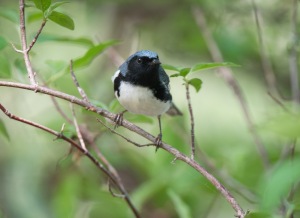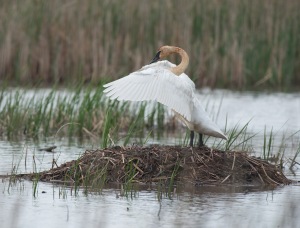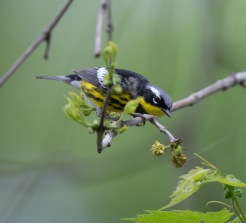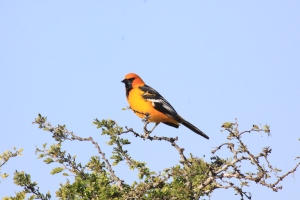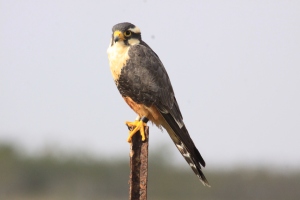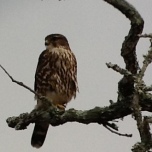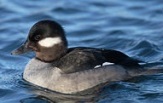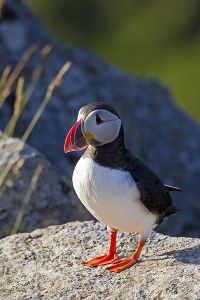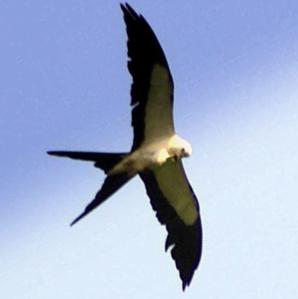7 NIGHT 8 DAY AMAZING BIRDING TOUR: August 07-14, 2017
DAY 1: Arrive San Pedro airport and transfer to Lodge at Pico Bonito
The Lodge at Pico Bonito is located in north eastern Honduras about 20 minutes outside the town of La Ceiba near the Caribbean coast. This will be our base throughout our tour with all nights spent in your own cabin on the lush, tropical grounds of this boutique lodge.
We will fly into the San Pedro Sula airport where we will be met by our driver and our local guide. The drive to the Lodge is about 2.5 hours but it will be filled with beautiful scenery and we will learn much from our local guide and driver about Honduras on this drive. Snacks, water and soft drinks will be provided as will pillows in case anyone wants to rest.
An early evening arrival at The Lodge at Pico Bonito usually affords us time to settle in, to get acquainted with the Lodge’s beautiful grounds, and do some light birding before dinner.
Below is our planned itinerary for the tour. However, we may rearrange the agenda for different days depending on the weather or our success at locating certain bird species or other reasons if beneficial for the tour. Changes are at the Tour leader’s discretion.
DAY 2: The Lodge at Pico Bonito – Lovely Cotinga
Lovely Cotinga
Our first day at The Lodge at Pico Bonito will begin at 6:00 AM, with an early breakfast/orientation on the spacious, front deck of The Lodge‟s Itzama Restaurant. For the next several hours our local guide will lead us throughout the Lodge grounds where we will see numerous species that are common in the early hours. A climb to the top of the “Toucan Tower” observation platform, offers a bird’s eye view of the forest canopy that can include heart-stopping views of the coveted Lovely Cotinga
Throughout the morning we will bird areas of tropical, secondary, and gallery forest and plantation areas along the Rio Coloradito. Along this route, diversity is the rule and examples of sightings include Lovely Cotinga; Masked and Black-crowned Tityras, Blue crowned and Turquoise-browed Motmots, Tody Motmot, Keel-billed Toucan, Collared Aracari, Ferruginous Pygmy Owl, Black-cowled Oriole, Black-headed, Violaceous, Collared and Slaty-tailed Trogons, Royal Flycatcher, Green, Shining and Red-Legged Honeycreepers, and 16 species of Hummingbirds are possible including Crowned Woodnymph, Blue-throated Sapphire, Violet Sabrewing, Purple-crowned Fairy, Stripe-tailed Hummingbird, Brown Violet-ear, Green Violet-ear and White-necked Jacobin.
Lunch at The Lodge at Pico Bonito
In the afternoon, after lunch and a light siesta to nap, read, rest, or visit the spa we’ll explore with our guide along The Lodge’s loop trail system in search of interior rain forest birds.
In addition to the Toucan tower at the trail’s beginning, this route offers an elevated ridge platform that overlooks the Rio Coloradito and surrounding forested slopes. We’ll also visit observation Tower #3 which is set amidst an area of bird rich secondary forest and overgrown plantation.
White-collared and Red-capped Manakins occur at various locations here and the Grey headed Piprites may be seen as well. Both Keel-billed and Tody Motmots are frequently encountered along this route. Other species include the Great Curassow, Crested Guan, Slaty-breasted Tinamou, Little Tinamou, Scaly-throated Leaftosser, Keel-billed, Emerald and Yellow-eared Toucanettes, Collared Aracari, a host of Flycatcher species, including the Royal Flycatcher, and many of the Trogons, Woodpeckers, Tanagers and Oriole species on The Lodge‟s 420+ bird list.
In addition to superb viewing from The Lodge’s towers, this route passes several overlooks along the Rio Coloradito and sightings of Raptor species are possible. Great and Northern Potoo are possible here as well.
Dinner at The Lodge at Pico Bonito
DAY 3: Cuero y Salado Wildlife Refuge
Gray-necked Wood-Rail
We’ll meet our guide early for breakfast, and depart for the refuge by 6:30 am.
Cuero y Salado Wildlife Refuge is named for the Cuero and Salado Rivers which meet here creating a complex web of fresh and saltwater lagoons before flowing into the Caribbean.
The Refuge comprises over 35,000 acres of rivers, lagoons, mangroves, and forests that are home to 35 species of mammals, other wildlife and 350 species of birds.
Access into this wilderness is via a small motorized train, which takes us along a century old track through bird-rich ranch lands, marshlands and plantation areas, ultimately arriving at the mouth of the Salado River and the Refuge itself.
Birding from the train is always fun and exciting, as the conductor stops to point out species of interest along the way. Depending on season, a variety of raptors, wading birds and edge-habitat species abound along the railway.
Once at the Refuge, we will explore the various aquatic and forest habitats from a small, motorized skiff. Our local guide and boat handlers are superb spotters and when needed will silence our boat’s motor and quietly paddle in for a better look or a sought after photo. Possible bird species include the secretive Agami Heron, Jabiru Stork, Pygmy Kingfisher, Boat-billed Heron, Bare-throated Tiger Heron, Gray-necked Wood-Rail, Laughing Falcon, Bat Falcon, Lesser Yellow-headed Vulture, and Sungrebe are but a few potential highlights of a visit to Cuero y Salado. Other wildlife commonly seen here include: Black Howler Monkeys, White-faced Monkeys, Three-toed Sloth, Lesser Anteater, Central American Coati, Agouti, Raccoon, Green Iguana, American Crocodile, and Spectacled Caiman.
Lunch at The Lodge. An afternoon to relax, take a nap, get a massage, visit the butterfly farm, or birding on your own from the Lodge’s decks or gardens.
Dinner at The Lodge at Pico Bonito.
After dinner, we’ll be guided around the Lodge’s gardens and plantation areas where Mottled Owl, Vermiculated Screech Owl, Black and White Owl, and both Great and Northern Potoo may be found.
DAY 4: Rio Aguan Valley and The Endemic Honduran Emerald
Emerald Hummingbird
We’ll begin this day of birding Honduras’ unique dry forest habitat with an early breakfast at The Lodge, and depart by 4:30 AM.
The target of our search, the beautiful but critically endangered Honduran Emerald survives only in remaining pockets of tropical dry forest to the south of Pico Bonito National Park. Descending the southern side of the Park (the rain shadow), cloud forested peaks and pine studded slopes give way to a semi-arid, almost desert-like plain, once dominated by tropical thorn or dry forest.
Although endangered, the Honduran Emerald is considered common within its habitat. Our chances of seeing the Honduran Emerald are very good.
Our ride into “Emerald country” can be equally exciting, as a surprising number of bird species inhabit dry tropical forest.
Along the way, we’ll also visit local wet areas within this arid region. These sites can be magnets for wading birds and other species. We’ll go after species such as; Double-striped Thick-knee, Lesser Roadrunner, Lesser Ground-cuckoo, Beardless Tyrannulet, White-lored Gnatcatcher, White-throated Magpie-jay, Banded Wren, White-bellied Wren, and Stripe-headed Sparrow, and Salvin’s Emerald among others.
We’ll enjoy lunch in the nearby ranching town of Olanchito, and return to The Lodge by 4:00 PM. Dinner at The Lodge at Pico Bonito.
DAY5: Hummingbirds of Rio Santiago
Rio Santiago Nature Resort is a 15 acre private preserve located 30 kilometers west of The Lodge at Pico Bonito. Its secluded rain forest location and impressive numbers of hummingbird feeders has earned it the name of “hummingbird capital of Honduras”. Throughout most of the year, Santiago’s trails and main garden areas abound with bewildering numbers of some of Honduras’ most well- known hummingbird species.
Rufous-tailed Hummingbird, Cinnamon Hummingbird,
Brown Violet-ear, Band-tailed Barbthroat, Violet Sabrewing, Crowned Woodnymph, Stripe-throated Hermit, Long-billed Hermit, Stripe-tailed Hummingbird, White-bellied Emerald, and Scaly-breasted Hummingbird are among those species that frequent Santiago’s feeders. Black-crested Coquette can also be seen on Santiago’s main trail.
In addition, both the spectacular Keel-billed Motmot and Rufous-tailed Jacamar are frequently seen along with Red-capped and White-collared Manakins along Santiago’s trail system.
Lunch at The Lodge at Pico Bonito, followed by rest time, a nap, reading, the spa or birding on your own at the lodge. After dinner we will offer an optional Night Walk to look for owls, Potoos, Red-eyed Treefrogs, and other nocturnal wildlife!
DAY 6: Lancetilla Botanical Gardens
We’ll meet our guide for breakfast, and depart for The Lancetilla Botanical Gardens by 5:30 AM. Set amidst a coastal valley flanked by low, rain-forested hills. The United Fruit Company founded Lancetilla as a station where tropical fruit and wood trees were studied for commercial value. The Gardens were founded in 1925, and some of that work continues. However this diverse tropical treasure, composed of a mosaic of forest and edge habitats, is today best known for its superb birding.
Honduras’ annual Christmas Bird Count is held at Lancetilla, and every December, bird watchers flock to confirm, and add to the Garden’s growing list of colorful, tropical species. The current bird list reads like a who’s who of tropical birds, and includes Motmots and Manakins, Woodcreepers, Warblers, Woodpeckers, Toucans, Tanagers, and scores of others.
Thanks to this diversity; a typical day of birding here could yield:
Little Tinamou, Common Black Hawk, Ornate Hawk-eagle, Ruddy Crake, White-fronted Parrot, Red-lored Parrot, Squirrel Cuckoo, Black-headed Trogon, Violaceous Trogon, Collared Trogon, Turquoise-browed Motmot, Blue-crowned Motmot, Rufous-tailed Jacamar, Great Antshrike, Barred Antshrike, Long-billed Gnatwren, and a host of other resident and migrant species.
We’ll complete our morning at Lancetilla with lunch in the beach-side town of Tela, and return to The Lodge by late afternoon. Rest, relax read, get a massage in the afternoon.
Dinner at The Lodge at Pico Bonito.
Day 7: Snorkeling The Cayos Cohinos Marine Sanctuary
The world’s second largest coral reef system known as the Meso-American Barrier Reef ! Second in size to the Great Barrier Reef.
A true tropical island paradise, the Cayos Cochinos, or, “Hog Keys” is a group of 15 small, remote islands located about 9 miles north of the mainland of Honduras. The entire system of pristine islands and surrounding coral reef is considered a biological reserve and is managed with the help of the Smithsonian Tropical Research Institute and other conservation groups, which operate a research station on one of the larger keys. Research there focuses on the Cayos‟ unique flora and fauna and includes studies not only of the abundant marine life and coral reef ecosystem, but also of the islands’ terrestrial life, some of which is endemic and considered threatened species.
We will depart the Lodge at 6:30 AM to the Garifuna village of Sambo Creek to meet our boat captain, and board for a one hour ride to the Cayos. The Garifuna People and Culture originated from West African slaves who washed ashore on the Caribbean island of St. Vincent around 1635 while likely on their way to New World mines and plantations. They intermarried with local populations of Arawaks and Carib Indians, immigrants from South America, to become known as Garifunas or Black Caribs. Garifuna culture combines Caribbean fishing and farming traditions with a mixture of South American and African music, dance and spirituality. UNESCO declared Garifuna language, dance and music in Belize to be a “Masterpiece of the Oral and Intangible Heritage of Humanity” in 2001.
Our crossing to the Cayos will be to one of the smaller keys where we will enjoy an hour of snorkeling, discovering, and learning about the incredibly diverse and colorful residents of the coral reef.
We will visit some of the other keys for more snorkeling and a short hike.
Snorkel, fins, mask and lunch included.
For lunch we will have a delicious typical Garifuna meal of native Central American crops and African staples, including fish, chicken, cassava, bananas and plantains. We will dine on the white sand beach of one of the inhabited keys named “Cayo Chachahuate”. Return to the Lodge.
Dinner at Pico Bonito.
Our Last Day:
Day 8: Breakfast and Depart The Lodge at Pico Bonito for San Pedro Sula International Airport
About our Lodge:
Built in 2000, Pico Bonito is the first and only luxury ecological destination in Honduras with Small Luxury Hotel status. Twenty-two simple but elegant cabins built using native woods with vaulted ceilings and furnished in plantation style.
Among the many amenities you will enjoy are individual cabins with beautiful hardwood floors, private bathrooms, louvered and screened windows, ceiling fans, A/C and a veranda with a hammock. The main public area offers an open-air environment with fine views of the beautiful gardens. The restaurant boasts good food and a full-service bar. The landscaped swimming pool offers views of the surrounding forest and gardens.
Other amenities include an outdoor veranda and a comfortable reading area. After a day of birding you may want to relax with a pampering treatment at the lodge’s full-service spa. Services include deep-tissue massages, hot stone massages, sports massages, and Swedish massages, manicures and pedicures. Therapy treatments include aromatherapy, Ayurvedic, and hydrotherapy. The spa is equipped with a spa tub and a steam room. Nearby optional excursions include a butterfly farm, reptile house and a coffee plantation.
Here are links to reviews for the restaurant and lodge.
The main lodge area is at 360 ft. above sea level, but the main trails (Loop Trail system) up to about1,000 feet elevation. In terms of difficulty, the Loop trail is about a 6 on a scale from 1 (easy) to 10 (very hard). Degree of physical fitness is more of a consideration than age in walking the trails. If a person prefers an escalator over a flight of stairs, then maybe they’ll enjoy the lower property more. For those who can’t or don’t want to walk the Loop there are plenty of trails on the lower, flatter part of the property that, while not entering primary forest, are superb for birding. Comfortable hiking boots are recommended.
COST OF THE JOURNEY
Cost of the 8 day journey is $2495.00 per person Double and $2895.00 Single from San Pedro Sula, based on double occupancy and includes: 7 nights’ accommodations, all meals from dinner Day one through breakfast Day 08, group airport transfers, transportation in Honduras, park and preserve entrance fees, professional guides, and miscellaneous program costs. To register for the tour email me to reserve space for the tour. I will reply to indicate that you have a reserved space or that you are on a waiting list. I will then email you instructions for making the deposit, medical information, and waiver forms.
NOTE: Additional details for flight, packing, etc will be provided registered participants. If you have questions, please email me.
TRAVEL ARRANGEMENTS and GENERAL NOTES
Honduras has low recognition as a birding destination for many birders. However, the American Birding Association had a tour to Pico Bonito Nov. 4 to 13, 2016. Other tour companies are also having regular tours to this beautiful area. 8,000 British nationals visited Honduras in 2015. So, even though you may not have heard or know anything about Honduras, it is a birding destination. Below are some links to guide you in planning your trip.
Note: Your passport must be good for a minimum of 6 months beyond August 14, 2017.
Like most other Central and South American countries no medical facilities in Honduras live up to U.S. standards and facilities for advanced surgical procedures are not available outside of the major cities. We recommend that you purchase travel and medical coverage insurance before making a reservation for this tour or any tour outside of the U.S.
Here is the link for the Center for Disease Control in Atlanta, Ga. Please note that we will be staying at a luxury lodge with many visitors from the US, Canada, and Europe per year and not some poorly maintained lodge. We will not be eating from street vendors but only acceptable restaurants that cater to visitors from the US, Canada, and Europe. Remember 8,000 British nationals visited Honduras in 2015. These facts must be taken into consideration with respect to the CDC suggestions. The areas that we will be in are not known to have a significant incidence of disease, but each person should consult their personal physician for appropriate advice.
https://wwwnc.cdc.gov/travel/destinations/traveler/none/honduras
We will not be spending time in San Pedro Sula, only there as we arrive and depart. We will be picked up and dropped off at the airport by staff of Pico Bonito. We will not be visiting Tegucigalpa, however we may drive through La Ceiba. Like most large cities, these areas have high crime regions. But again, we will not be in these areas.
Honduras is served by a number of major airlines, including American Airlines, Continental, COPA, TACA, AeroCaribe, and Iberia. Gateway cities include, but are not limited to: Miami, Houston, New Orleans, Los Angeles, and San Francisco. Plan to arrive no later than 2:00 PM on or before August 07 ; please try to schedule departing flights after 12:00 PM on.
From Houston, I recommend the United Airlines flight that Departs Houston at 11:25 am and Arrives in Honduras (Sula) at 1:20 pm. For the return trip I recommend the United flight that Departs Honduras at 2:15 pm. So whatever airline you fly, plan to arrive in Honduras on August 07 no later than 1:30 pm and to depart Honduras no earlier than 2:00 pm on August 14, 2017. If following these time lines we will pick your up at the airport. If you make any other arrangements (arrive earlier, etc.) please let me know.
NOTE: Additional details for flight, packing, etc will be provided registered participants.
